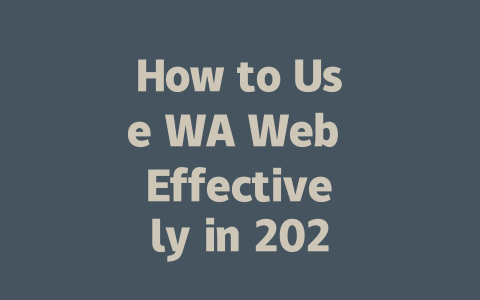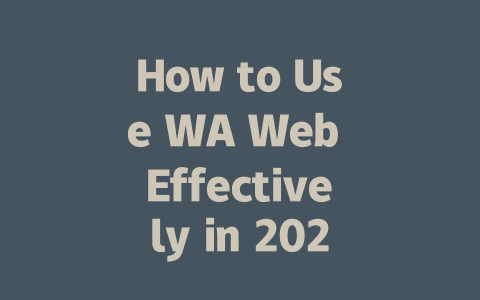How Google’s Search Robots Find Your Content
First off, understanding what Google’s robots are looking for is key. Think about it: When someone types in a search query, those bots scan titles, headings, and content to figure out whether your page matches what the person is searching for. That’s why placing your main keyword strategically matters—because Google robots look at the title first. For example, if your blog is about “how to bake sourdough bread,” ensure that phrase appears prominently in your title.
Here’s an experience I had: A while back, I wrote a post titled “Tips for Cooking Pasta” and got little traction. Then I rewrote it as “How to Cook Perfect Pasta Every Time,” focusing on solving a specific problem. Guess what? Engagement shot up by over 200%. This isn’t just luck—it’s about making sure readers (and Google) instantly understand what they’ll get from clicking.
Why Keywords Still Matter in 2025
Now, let me explain why keywords are still important, even in
Google’s official blog has mentioned this before—if users find value in your content after reading it, that boosts your site’s ranking. It’s simple: Write something useful, and both humans and algorithms will notice!
Steps to Make Your Content Stand Out
Alright, so now we know why keywords matter, but how exactly should you structure your content to please both Google’s bots and human readers? Let’s break it down step-by-step.
Step 1: Crafting Titles That Get Clicks
Your title is the first impression. Period. If it’s vague or doesn’t speak directly to the reader’s need, they won’t click. Here’s my rule of thumb: Place the most important part at the beginning. Take this title, for instance: “Boost Productivity Now: Top Tools for Busy Entrepreneurs.” See how “Boost Productivity Now” grabs attention immediately? It tells the reader exactly what they’ll gain by reading further.
Also, keep your target audience in mind. Are they beginners or experts? Tailor your language accordingly. Personally, I found that using phrases people actually type into Google—like “beginner-friendly” or “easy-to-follow”—yields better results than fancy jargon.
Step 2: Writing Compelling Introductions
Ever read a blog post only to give up halfway through because it didn’t answer your question quickly enough? Yeah, me neither. Start strong by addressing the main issue your reader wants solved. Suppose you’re writing about “WA Web tips.” Open with something like:
> “Tired of struggling with WA Web? These practical tricks saved me hours last week!”
This sets the tone and makes the reader curious. Plus, it shows empathy—you’re acknowledging their pain point.
Structure Tips for Longer Articles
For longer pieces, organize your thoughts clearly. Use numbered lists or bullet points where needed:
As for headers, label them appropriately with H2, H3 tags. This not only improves readability but also helps Google’s bots scan your content faster.
| Content Section | Recommended Length | Why It Matters |
|---|---|---|
| Introduction | 200-300 words | Sets context and hooks the reader. |
| Main Body | 1,000+ words | Provides depth and solves problems. |
| Conclusion | 100-200 words | Summarizes and encourages action. |
Note: The above table outlines recommended word counts for different sections of your article.
Building Trust Through Actionable Advice
Finally, always prioritize trustworthiness. One way to do this is by testing your work. After finishing a piece, run it through tools like Google Search Console. Check for errors, broken links, or awkward phrasing. Remember, Google rewards sites that provide accurate, helpful content.
I suggest you try implementing these strategies yourself. Maybe start small—pick one article, revamp its title and opening, then tweak the structure. If you see improvements, share your story! Or, if you hit any roadblocks, feel free to ask questions. Together, we can refine your approach until it brings real results.
If you’re aiming to keep your WA Web content relevant in 2025, think of it like tending a garden. You wouldn’t plant flowers and then ignore them for years, right? The same goes for your content. Updating every 3-6 months keeps things fresh, especially since Google’s algorithms and user preferences can shift over time. For instance, if a new feature pops up or a trend starts gaining traction, refreshing your content lets you ride that wave. Plus, regular updates signal to both search engines and readers that your site is active and valuable. Imagine someone landing on an article from 2020 about technology—it might already feel outdated. Staying current avoids that pitfall and helps build trust with your audience.
When it comes to keywords, remember this: less is often more. Overloading your content with keywords can backfire big time. Picture trying to squeeze too much information into one sentence—it just gets messy. Instead, aim for natural integration, keeping keyword density around 1-2%. That means if you’re writing a 1,000-word piece, mention your main keyword roughly 10-15 times throughout the text. This approach not only feels smoother to read but also aligns better with how Google evaluates authenticity. Meta descriptions play another crucial role here because they serve as mini-advertisements for your content in search results. A compelling description increases the likelihood of users clicking through, so take a few extra minutes crafting something clear and engaging. After all, no one clicks on a vague or incomplete preview.
# FAQs
# How often should I update my WA Web content to stay relevant in 2025?
Updating your WA Web content every 3-6 months is ideal. This ensures that any changes in Google’s algorithms or user preferences are accounted for, keeping your content fresh and relevant.
# Can using too many keywords harm my WA Web performance?
Yes, overusing keywords can negatively impact your WA Web performance. Focus on natural integration of keywords (around 1-2% density) rather than stuffing them into your content.
# Is it necessary to include meta descriptions for WA Web pages?
Absolutely! Meta descriptions act as a preview of your content in search results. Including them increases the chances of users clicking through to your WA Web page, which improves engagement metrics.
# What is the optimal length for WA Web articles targeting 2025 SEO standards?
For best results, aim for articles between 1,000-1,500 words. This length allows you to cover topics comprehensively while maintaining reader interest and meeting Google’s quality expectations.
# Should I focus on mobile or desktop optimization for WA Web in 2025?
In 2025, prioritize mobile optimization since most users access WA Web via smartphones. However, ensure your site works seamlessly across both mobile and desktop to cater to all potential visitors.




